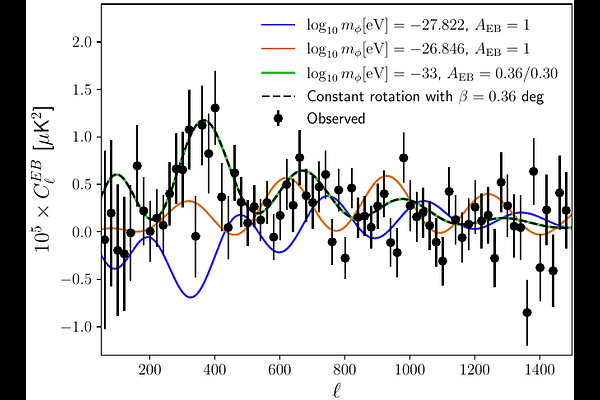Planck Constraints on Axion-Like Particles through Isotropic Cosmic Birefringence

Planck Constraints on Axion-Like Particles through Isotropic Cosmic Birefringence
Toshiya Namikawa, Kai Murai, Fumihiro Naokawa
AbstractWe present constraints on isotropic cosmic birefringence induced by axion-like particles (ALPs), derived from the analysis of cosmic microwave background (CMB) polarization measurements obtained with the high-frequency channels of Planck. Recent measurements report a hint of isotropic cosmic birefringence, though its origin remains uncertain. The detailed dynamics of ALPs can leave characteristic imprints on the shape of the $EB$ angular power spectrum, which can be exploited to constrain specific models of cosmic birefringence. We first construct a multi-frequency likelihood that incorporates an intrinsic nonzero $EB$ power spectrum. We also show that the likelihood used in previous studies can be further simplified without loss of generality. Using this framework, we simultaneously constrain the ALP model parameters, the instrumental miscalibration angle, and the amplitudes of the $EB$ power spectrum of a Galactic dust foreground model. We find that, if ALPs are responsible for the observed cosmic birefringence, ALP masses at $\log_{10}m_{\phi}[{\rm eV}]\simeq-27.8$, $-27.5$, $-27.3$, $-27.2$, $-27.1$, as well as $\log_{10}m_{\phi}[{\rm eV}]\in[-27.0,-26.5]$, are excluded at more than $2\,\sigma$ statistical significance.